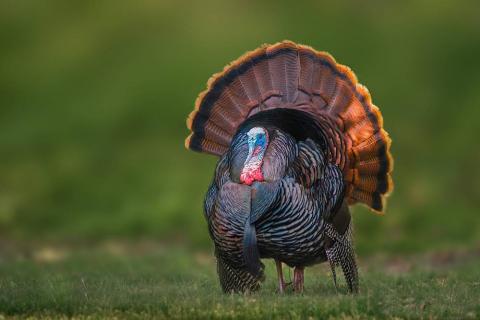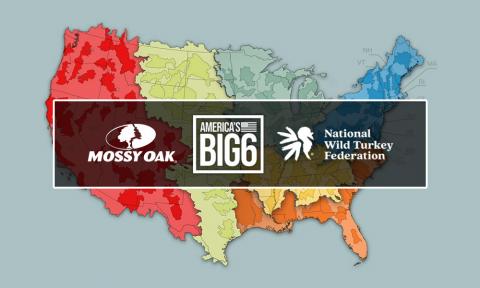Brian Mosley’s Most Successful Elk Hunt

Editor’s Note: Brian Mosley, a Mossy Oak ProStaffer for the past five years, is from Bloomfield/Farmington, New Mexico in the northwestern corner of the state. He said, “What I like about where I live is I'm 55 miles from Colorado, about 2 hours from Utah and an hour, 15 minute drive from Arizona. I can drive to any one of these states, hunt elk and drive home after the hunt. Plus, if I take an elk, I can get it back home quickly. Another advantage about where I live in New Mexico is that I can buy an over-the-counter elk tag in Colorado, which has some of the most elk in the western states.”
Mosley has been hunting elk for 17 years and has taken 15 elk – 98 percent of those with his bow. Mosley’s an avid elk hunter but also enjoys being a football and track coach, as well as a strength and conditioning coach for students at the junior high and Bloomfield senior high schools. For Mosley, the challenge of the mountains and hunting elk in high terrain is just another day’s workout.
I was hunting an untitled unit that didn’t have the number of elk that the titled units did in New Mexico. It wasn’t far from my home. Later on in the morning, after hiking from daylight until about 10:30 a.m., I decided to sit down on a stump, eat a bagel and rest for a little while. Then I started blowing a cow call.
 This hunt was one of my first-ever elk hunts in New Mexico, and I was trying to learn to hunt elk. I'm originally a whitetail hunter from Illinois. So, I was hunting then to learn the land and to practice blowing my elk call. I really wasn’t hunting elk. Since I had a mule deer tag and an elk tag, I was climbing up to the high country to look for a place to find a mule deer. I was totally frustrated, because I hadn’t seen any animals from before daylight until I decided to take a break. The last thing I expected to happen was to get a bull within bow range, since I wasn’t really seriously blowing the cow call. I was just trying to learn how to blow it.
This hunt was one of my first-ever elk hunts in New Mexico, and I was trying to learn to hunt elk. I'm originally a whitetail hunter from Illinois. So, I was hunting then to learn the land and to practice blowing my elk call. I really wasn’t hunting elk. Since I had a mule deer tag and an elk tag, I was climbing up to the high country to look for a place to find a mule deer. I was totally frustrated, because I hadn’t seen any animals from before daylight until I decided to take a break. The last thing I expected to happen was to get a bull within bow range, since I wasn’t really seriously blowing the cow call. I was just trying to learn how to blow it.
When I first saw this bull, he was at 44 yards. I didn’t move, and the wind was in my face. So, the elk couldn’t smell me either, and that’s what I call a perfect God-given situation. My bow was sitting across my lap, because the last thing I expected to happen during my lunch break was to have an opportunity to take a bull. The elk was moving slowly toward me. I picked up my bow and nocked an arrow. Before I’d eaten my bagel, I’d ranged several trees out in front of me and behind me. I had thought a deer might wander in, and I wanted to be able to take the shot and know the distance I was from a deer.
Once the bull stepped between two trees that I had ranged at 28 yards, I mewed like a cow elk. But instead of looking at me, the bull looked the other way, presenting a broadside shot. I aimed right behind the bull’s shoulder and touched the trigger of my mechanical release. The broadhead went all the way through the bull and lodged in a tree 15 yards on his other side. I watched the elk as he ran after taking the arrow and then fell.
At that time, I didn’t have a frame pack. I was hunting by myself, and my truck was about a mile away. Because I’d never taken an elk, field dressing, skinning and quartering him was a real chore. I started field dressing the elk at about 11:15 a.m. and didn’t finish field dressing, quartering and carrying the meat out until 7 p.m. I carried that bull out in quarters, since I didn’t have any knowledge of deboning an elk. Now, I generally hunt well away from my vehicle, so I debone all the animals that I take to get the meat and the elk’s head out much quicker. Luckily, once I had loaded up this first elk, I still had enough daylight to get out of the woods and head back home. Even today that bull elk remains the biggest I’ve ever taken. He scored 356-3/8 on Pope and Young.
To get John and Denise Phillips’ free cookbook, “Miz Denise’s Outdoor Cooking: More than 35 Recipes for Elk and Mule Deer,” go to http://johninthewild.com/free-books.



























